2017
Type of resources
Available actions
Topics
Keywords
Contact for the resource
Provided by
Years
Formats
Representation types
Update frequencies
Service types
Scale
Resolution
-

This dataset provides an assessment of the potential for a geological deposit to shrink and swell. Many soils contain clay minerals that absorb water when wet (making them swell), and lose water as they dry (making them shrink). This shrink-swell behaviour is controlled by the type and amount of clay in the soil, and by seasonal changes in the soil moisture content (related to rainfall and local drainage). The rock formations most susceptible to shrink-swell behaviour are found mainly in the south-east of Britain. Clay rocks elsewhere in the country are older and have been hardened by burial deep in the earth and are less able to absorb water. The BGS has carried out detailed geotechnical and mineralogical investigations into rock types known to shrink, and are modelling their properties across the near surface. This research underpins guidance contained in the national GeoSure dataset, and is the basis for our responses to local authorities, companies and members of the public who require specific information on the hazard in their areas. The BGS is undertaking a wide-ranging research programme to investigate this phenomenon by identifying those areas most at risk and developing sustainable management solutions. Complete Great Britain national coverage is available. The storage formats of the data are ESRI Shapefiles and MapInfo but other formats can be supplied. The GeoSure data sets and reports from the British Geological Survey provide information about potential ground movement or subsidence in a helpful and user-friendly format. The reports can help inform planning decisions and indicate causes of subsidence. The methodology is based on BGS DiGMap (Digital Map) and expert knowledge of the behaviour of the formations so defined.
-

The Collapsible Ground dataset provides an assessment of the potential for a geological deposit to collapse (to subside rapidly) as a consequence of a metastable microfabric in loessic material. Such metastable material is prone to collapse when it is loaded (as by construction of a building, for example) and then saturated by water (as by rising groundwater, for example). Collapse may cause damage to overlying property. The methodology is based on 'BGS Geology' (Digital Map) and expert knowledge of the origin and behaviour of the formations so defined. It provides complete coverage of Great Britain, subject to revision in line with changes in DiGMapGB lithology codes and methodological improvements. The storage formats of the data are ESRI Shapefiles and MapInfo but other formats can be supplied. The GeoSure datasets and related reports from the British Geological Survey provide information about potential ground movement due to six types of natural geological hazard, in a helpful and user-friendly format. The reports can help inform planning decisions and indicate causes of subsidence.
-
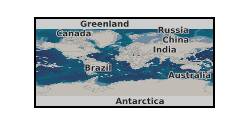
A single Excel spreadsheet giving augite-plagioclase-plagioclase dihedral angle populations in cumulates from the Rustenberg Layered Suite of the Bushveld Igneous Complex. A document providing the background information and location of the samples used in the study. The data have been published: Holness et al. (2017) Contributions to Mineralogy and Petrology, 172:102 doi.org/10.1007/s00410-017-1423-4
-
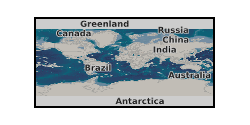
A worldwide compilation of 333 analyses of U and Pb concentrations in olivine-hosted melt inclusions from island arc magmas. These data were used in Delavault et al. (2016, Geology 44, 819-822) to calculate the present-day distribution of the U/Pb ratios in magmas generated in subduction setting.
-

EPSRC project EP/K035878/1 - The DiSECCS seismic analysis toolbox comprises a series of codes which implement various algorithms for analysing post-stack seismic data acquired as part of a geological carbon sequestration monitoring programme. The tools focus on determining the thickness, saturation distribution and physical properties of CO2 layers imaged on seismic data. The toolbox also contains a number of new rock physics models developed as part of the DiSECCS project in the form of Mathematica notebooks.
-
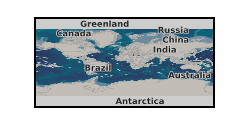
Data produced from NERC Grant NE/M001156/1 - Fe speciation data (FeHR/FeT, and FePy/FeHR), collected following methods outlined in Izon et al., 2017, Proceedings of the National Academy of Sciences (PNAS); % Carbonate, determined gravimetrically; d34SV-CDT for sedimentary pyrite, analysed by Iso-Analytical Laboratories, Cheshire, using standard EA-IRMS techniques; d15N of bulk rock, analysed by nano-EA-IRMS, following methods described in Polissar et al., 2009, Analytical Chemistry; d15N of kerogen extracted following the methods described in Zerkle et al., 2017, Nature, analysed by nano-EA-IRMS; d13C of organic carbon, measured on decarbonated rock powders by standard EA-IRMS techniques; %TN and TON % determined by standard EA-IRMS of bulk rock and extracted kerogen, respectively. Drill core samples were taken through the 2.7Ga old Manjeri Formation of the Belingwe Greenstone belt, Zimbabwe, which overlies more ancient gneissic basement with very well-exposed unconformity (Bickle et al. 1975). The Manjeri Formation, typically 50-150m thick, exhibits a deepening succession of facies (Grassineau et al., 2002, Hunter et al., 1998). It is directly overlain by komatiitic basalts and komatiites of the Reliance Fm., dated at 2692±9 Ma (Pb-Pb whole rock; Chauvel et al., 1993). The metamorphic grade of the Manjeri succession is variable, but generally remarkably low (Abell et al. 1981). Three drill cores were taken in the Manjeri Formation. The NERCMAR drill core has been described in detail by Grassineau et al., 2002. Drill cores A and B were collected some km to the north, in the upper Manjeri Formation.
-

The BGS GeoSure Shrink Swell 3D data is a regional hazard susceptibility map that identifies areas of potential shrink–swell hazard, in three dimensional space, at intervals down to 20m in the London and Thames Valley area. Shrinking and swelling clays can change volume due to variation in moisture, which can cause ground movement that may affect many foundations. The data provides an indication of variation in Volume Change Potential (VCP) of shrink-swell clays and is classified on an A-E (low to high) range of hazard susceptibility. BGS GeoSure Shrink Swell 3D for London is part of the BGS GeoSure range of natural subsidence products. It is derived from the BGS Geology 50k data, the BGS London Lithoframe 3D model and the GeoSure v7 Shrink-Swell layer.
-
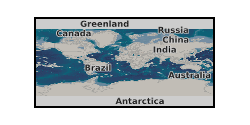
These data represent a massive synchrotron based programme to study ancient life. Not all of these data have been processed yet, nor have we published all of the results that we intend to. These data are still very much a work in progress. NERC grant abstract: Building on our previous successes with identifying and mapping the chemical residues of eumelanin and beta keratin, herein we propose an analytical and experimental plan to enhance our ability to detect and image key components of soft tissue. First of all we will perform a series of experiments with extant soft tissue so that we can monitor and determine the breakdown reactions of organic compounds as a function of host lithology, moisture content, and trace metal inventory. Secondly, we will complete an analytical programme, including SRS-XRF imaging, which will include these experimental run products as well as a series of time-stepped fossil samples of varying ages and host lithology so that we may build up a database which allows us to refine our general understanding of reaction paths during fossil degradation. Because the techniques we have developed are non-destructive we now have opened up the possibility for detailed analysis of extremely rare specimens which hold important information but cannot be destructively sampled. Finally, these experimental and analytical results from fossils and comparable extant species will be combined in order to answer several critically important questions in palaeontology, biology, and geochemistry. Project partners: University of Nancy, CNRS, Prof. R. Michels Feather degradation experiments SLAC Linear Accelerator Center, Linac Coherent Light Source, Dr. U. Bergmann SRS-XRF scans of large objects and x-ray spectroscopy SLAC Linear Accelerator Center, Stanford Synchrotron Radiation Lightsource, Prof. C. Kao SRS-XRF scans of large objects DIAMOND Lightsource, Prof. Fred Mosselmans XAS spectroscopy.
-
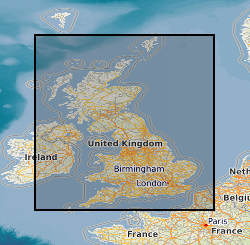
The 5km Hex GS Shrink Swell dataset shows a generalised view of the GeoSure Shrink Swell v7 dataset to a hexagonal grid resolution of 64.95km coverage area (side length of 5km). This dataset indicates areas of potential ground movement in a helpful and user-friendly format. The rating is based on a highest level of susceptibility identified within that Hex area: Low (1), Moderate (2), Significant (3). Areas of localised significant rating are also indicated. The summarising process via spatial statistics at this scale may lead to under or over estimation of the extent of a hazard. The supporting GeoSure reports can help inform planning decisions and indicate causes of subsidence. The Shrink Swell methodology is based on the BGS Digital Map (DiGMapGB-50) and expert knowledge of the behaviour of the formations so defined. This dataset provides an assessment of the potential for a geological deposit to shrink and swell. Many soils contain clay minerals that absorb water when wet (making them swell), and lose water as they dry (making them shrink). This shrink-swell behaviour is controlled by the type and amount of clay in the soil, and by seasonal changes in the soil moisture content (related to rainfall and local drainage). The rock formations most susceptible to shrink-swell behaviour are found mainly in the south-east of Britain. Clay rocks elsewhere in the country are older and have been hardened by burial deep in the earth and are less able to absorb water. The BGS has carried out detailed geotechnical and mineralogical investigations into rock types known to shrink, and are modelling their properties across the near surface. This research underpins guidance contained in the national GeoSure dataset, and is the basis for our responses to local authorities, companies and members of the public who require specific information on the hazard in their areas. The BGS is undertaking a wide-ranging research programme to investigate this phenomenon by identifying those areas most at risk and developing sustainable management solutions. Complete Great Britain national coverage is available.
-
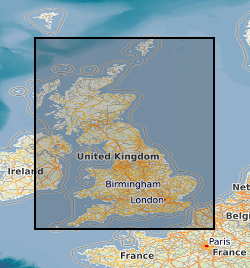
The Debris Flow Susceptibility Model for Great Britain version 6.0 (DFSM_GB_v6.0) provides information on the likelihood of debris flows occurring at a given location based on a combination of digital geological, hydrogeological and topographic data. It is a raster dataset at 50m resolution, showing susceptibility for debris flows on a scale A (lowest likelihood) to E (highest likelihood). The methodology develops an additional dimension to the BGS GeoSure Landslides surface layer (Dashwood et al., 2014) and is designed for users interested specifically in debris flow susceptibility. The identification of debris flow hazards can assist regional planners; rapidly identifying areas with potential problems and aid local government offices in making development plans by helping to define land suited to different uses. Other users of these data may include developers, homeowners, asset owners, solicitors, loss adjusters, the insurance industry, architects and surveyors. The DFSM (Debris Flow Susceptibility Model) GB v6.0 was completed in March 2017.
 NERC Data Catalogue Service
NERC Data Catalogue Service